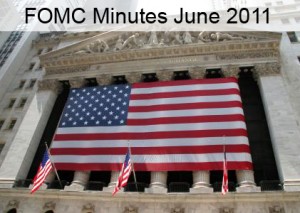 The Federal Reserve released notes from the June 21-22 Federal Open Market Committee (FOMC) meeting on Tuesday, shedding light on the FOMC’s current observations of the market and how it will be adjusting its activities moving forward. This release of minutes is one of eight releases the Fed meets, following each of the eight Fed meetings that take place each year.
The Federal Reserve released notes from the June 21-22 Federal Open Market Committee (FOMC) meeting on Tuesday, shedding light on the FOMC’s current observations of the market and how it will be adjusting its activities moving forward. This release of minutes is one of eight releases the Fed meets, following each of the eight Fed meetings that take place each year.
The minutes didn’t drop any bombshells that have had any significant immediate impact on mortgage rates, but did provide useful insight on how the Fed will be adjusting its activities, which will affect how mortgage rates move in the future. The market and mortgage rates as a whole were largely unmoved release of the minutes.
The Fed overview on the current state of the market shows that recovery has been slower than expected and that housing prices remain depressed, both factors holding back the overall recovery of the economy.
From the June 2011 FOMC Minutes:
Activity in the housing market remained depressed, as both weak demand and the sizable inventory of foreclosed or distressed properties continued to hold back new construction. Starts and permits of new single-family homes were essentially unchanged in April and May, and they stayed near the very low levels seen since the middle of last year. Sales of new and existing homes remained at subdued levels in recent months, while measures of home prices fell further.
Since the Fed sets monetary policy and participates in other activities such as buying Treasury debt, their activities can significantly impact the mortgage rates and the economy as a whole. As the Fed has implemented various policies to help push the economy out of recession, maintaining these policies for an extended period of time can do more damage than good. The June minutes provided some insight into how the Fed will unwind or exit some of these policies moving forward.
Fed Exit Strategy Principles
- The Fed will raise the Fed Funds Rate (the rate at which banks lend each other money overnight)
- The Fed will stop buying Treasury Debt (they are currently reinvesting the proceeds on existing obligations)
- The Fed will sell its holdings in mortgage-backed securities
Since rates are currently at very low levels, there is a lot more room for rates to go up then go down. That means that now is a great time to inquire about whether your existing mortgage is the best fit for you or to learn about your options if you are considering purchasing a home.


About The Author: Karengustin
More posts by karengustin